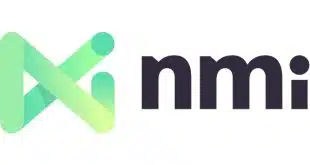Online merchants' fraud losses will hit $3 billion in 2006, up 7% over last year, but the overall growth in e-commerce means fraud as a proportion of sales will dip slightly, to 1.4% from 1.6%. This mixed news comes as Web merchants adopt an increasing array of alternatives to bank-issued credit and debit cards for payment, become more efficient in their back-office operations, and cope with a large percentage of fraud cases not indicated by chargeback statistics. These are among the salient results from the latest survey of Internet merchants by CyberSource Corp., released Tuesday. While CyberSource found that fraud losses continue to climb in absolute terms, it also discovered that fraud-coded chargebacks handled through the bank card networks account for a minority of the dollar volume. Indeed, chargebacks were linked to slightly more than one-third of merchants' losses this year, with the remainder of the fraud handled by merchants directly with reversals or credits. “The credit card industry wants everyone to believe fraud is under control,” says Doug Schwegman, director of customer and market intelligence at Mountain View, Calif.-based CyberSource, which sells transaction-gateway and risk-management services to e-commerce businesses. “That's what the chargeback numbers show. It's one of the deep dark secrets of our industry.” Meanwhile, though merchants are showing signs they are becoming more efficient about manual review, they're still spending huge sums on the process of checking orders in the back office to make sure they're valid. While some 81% of merchants are performing manual review, up from 73% in 2005, these sellers are checking 28% of the orders they receive, down from 35%. But the procedure is costly, with merchants on average allocating almost half of their fraud-management budgets to order review. The remainder is going to both internally developed and outsourced management tools. With numbers like these, it might not seem surprising that merchants are adopting a longer list of alternatives to conventional credit card acceptance. PayPal, for example, is now accepted by 34% of merchants, up from 23% last year, according to the survey. Twenty-six percent take gift cards and certificates, up from 19%. And 24% take e-checks on the automated clearing house, up from 20%. Google Checkout, introduced just five months ago, has already won acceptance at 6% of the surveyed merchants. Observers have also attributed gains by alternative services to merchant dissatisfaction with card-not-present interchange costs. But Schwegman says these gains have more to do with a need to convert more sales. “The more options you add, the lower your shopping-cart abandonment rate is,” he says. “It's not so much the credit card interchange issues. And all payment types have targets for fraudsters to try out for weaknesses.” Other results from the survey indicate that, for all merchants' back-office reviews and fraud screens, 1.1% of their orders turn out to be fraudulent. At the same time, merchants reject 4.1% of orders on suspicion of fraud. Schwegman estimates that one-fifth of these rejected orders were actually valid, leading to lost business and possible gains by competing retailers with better fraud screens. While the bank card networks' online authentication services made no gains with merchants in 2006, they remain a popular choice for ultimate deployment. Visa USA's Verified by Visa and MasterCard Worldwide's SecureCode were in place at 29% of surveyed merchants, the same proportion as in 2005. By contrast, other technologies made significant gains in adoption. The most popular, address verification, went to 79% from 75%. And Internet Protocol geo-location, a relatively new technology, zoomed from 25% to 35% adoption. But 16% of merchants said they planned to deploy the card networks' systems, the highest such rate among the technologies surveyed. For the survey, which CyberSource sponsors annually, Mindwave Research obtained responses from 351 online retailers of varying sizes between Sept. 14 and Oct. 6. Some 49% of these respondents are CyberSource clients. CyberSource derived its estimate of fraud losses by applying its survey result to an estimate from Forrester Research of $211.4 billion in expected online sales this year.
Check Also
NMI Taps Mastercard to Power Its New Tap-to-Pay Service for Small Merchants Eyeing Mobile Payments
With an eye on small merchants, payment processor NMI on Thursday announced a tap-to-pay feature …



